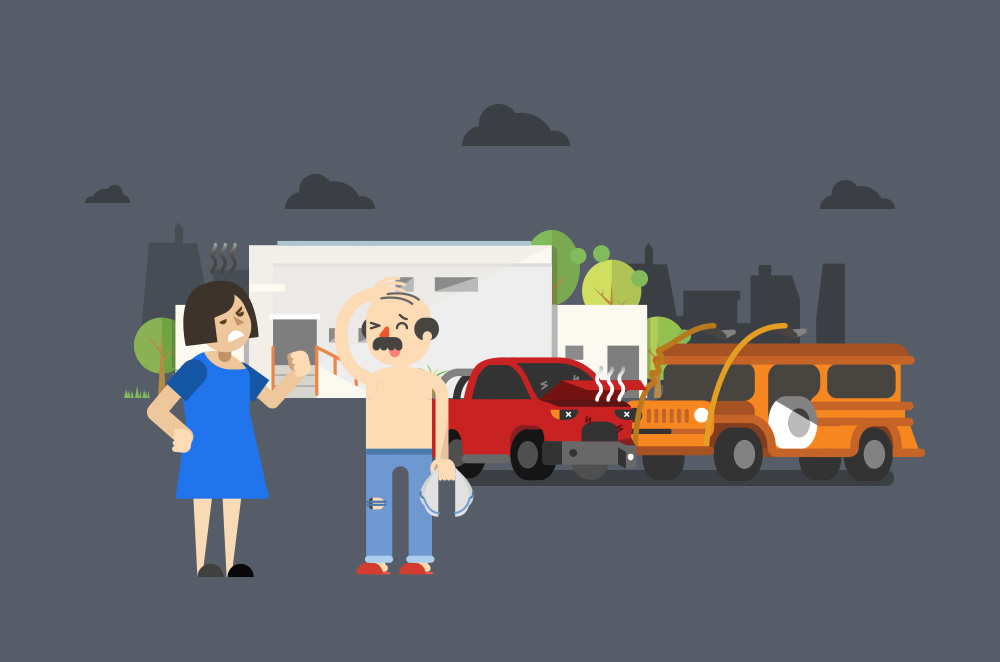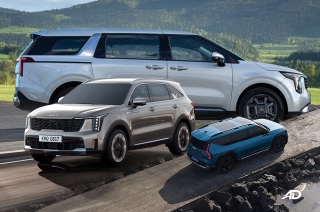
No matter how much we avoid it, accidents on the road do happen. But having a vehicle insurance policy simply isn’t enough. It pays to be informed of what you need to do when you get into an accident and know how to file for an insurance claim.
Step 1: Read your Insurance Policy
- Read and understand what your insurance policy covers (own damage, third-party liability, injuries, and free towing and roadside assistance).
- Make sure that you keep it inside your car.
Step 2: Secure the accident scene
In the case that you do get into an accident, remember these things:
- Stay calm.
- See that all passengers are ok. Call for help if you need medical assistance.
- Protect your belongings.
- Make sure that the surroundings are safe before stepping out of the vehicle.
- Secure the accident scene. Turn on your hazard lights and/or put up your early warning device (EWD).
Step 3: Document the accident scene
- Take photos of the scene with a camera or smartphone that shows your vehicle’s damage, license plate, and its relation to the road.
- If there is another car involved, take photos of it as well.
- Do not settle things right away with cash.
- Exchange information such as name, address, contact number, driver’s license number, and license plate.
- Call the police or an immediate authority to report the incident.
- Present your Driver’s License and Vehicle OR/CR.
- Acquire a police report.
- If it is a self-accident, a notarized affidavit may suffice.
- If your vehicle is immobile, call a towing service (or your insurance company).
Step 4: Notify your insurance company
After everything has been taken cared of, you can begin processing your insurance claim. Contact your insurance company and report the damage. They should be able to provide you with a list of the required documents and accredited repair shops.
Here’s a shortlist of what your insurance company will ask from you:
- Accomplished claim form.
- Photos from the accident showing the accident scene and vehicle damage.
- Police report or notarized affidavit.
- Estimated cost of repair from accredited repair shop.
- Photocopy of Driver’s License with original receipt.
- Photocopy of vehicle’s Motor Vehicle Registration Renewal (MVRR) Official Receipt and Certificate of Registration.
Step 5: Submit required documents
Forward all the required documents to the car insurance company as soon as you can to avoid delays.
Step 6: Letter of Authorization and Repair
After you’ve completed all the required documents, the insurance company will then issue a Letter of Authorization (LOA). Sometimes it takes a while, so you will have to follow them up. But ultimately, the accredited car repair shop will only commence with the repair once the LOA has been released.
After that, bring your car in for repairs and pick it up when it looks new again.
CAUTION!
You should know that there are several things that might disqualify you from filing an insurance claim.
- If you are doing something illegal, such as beating the red light, driving under the influence of alcohol or illegal substances, and even driving without a license.
- If the damage was caused by a natural disaster, insurance policies will not cover this if you don’t have Act of Nature (AON) coverage.
- If the damage was caused by riots, war, or public disturbance.
This only serves as a guide and some of the info here may differ from the actual process that your car insurance company requires. It’s strongly suggested to discuss things with them and comply to their requirements.
Nevertheless, it’s still best to not go through all these hassle at all. As the line goes, prevention is better than cure. Please drive safely.
Latest Features
-
An all-electric future: The Porsche Macan Electric / Featured Article
Porsche’s Macan goes all-electric; it’s a new beast with an electrified heart, yet unmistakably Porsche in performance and spirit.
-
Which Kia should I buy? / Featured Article
We’re here to help you decide which Kia vehicle is best for you, whether it’s a sedan, crossover, or minivan.
-
Why Lynk & Co is a good option for luxury car buyers / Featured Article
Lynk & Co offers premium value for those exploring the luxury market.
Popular Articles
-
Electric Vehicles in the Philippines for under P1 million
Jerome Tresvalles · Aug 19, 2025
-
Top 3 Cars For Every Lifestyle—What Cars Are Right For You? | Behind a Desk
Caco Tirona · Apr 24, 2024
-
5 Tips to Maximize Fuel Efficiency
Jerome Tresvalles · Sep 09, 2024
-
Five driving habits that are draining your fuel tank
Jerome Tresvalles · Jun 24, 2025
-
Can engine braking harm your engine?
Jerome Tresvalles · Sep 11, 2025
-
Do electric cars even need maintenance?
Jerome Tresvalles · Oct 23, 2024
-
Best vehicles for an active outdoor lifestyle
Shaynah Miranda · Jul 25, 2024
-
How to drive different types of vehicle transmissions
May 23, 2024
-
5 easy ways to keep your car interior clean
Allysa Mae Zulueta · Nov 15, 2021
-
How to survive Metro Manila traffic
Earl Lee · Aug 16, 2022



